The Old Red Iron Bridge in Waterford City was once an important part of Ireland‘s railway network, being part of the fastest mail route between London and the transatlantic port of Queenstown (now Cobh). Its importance declined over time and the route closed in 1967, leaving the Old Red Iron Bridge obsolete. It reopened in 1970 for freight traffic but that ceased in 1987 before the line was closed entirely in 1995. The bridge has been abandoned ever since.
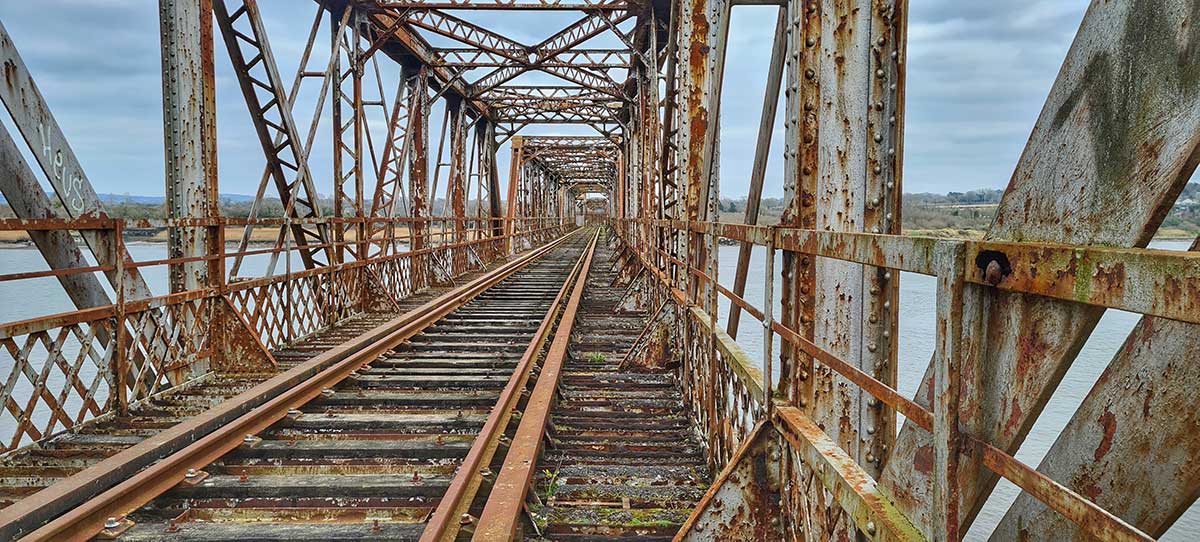
The Old Red Iron Bridge was originally built in 1906 by William Arroll & Co. of Glasgow. Throughout its history, William Arroll & Co. was involved in many major infrastructure projects in the United Kingdom and around the world. Some of its notable projects include the construction of steam boilers for ships, such as the Titanic, and the manufacture of steel products, including beams and girders, which were used in the construction of bridges, buildings and other structures.
The bridge has 9 spans. The central span could be lifted for shipping however it has been subsequently removed. The removed section is now located a couple of hundred metres downstream on the shoreline. The control cabin and some of the mechanical equipment used to lift the bridge for passing boats can still be seen.

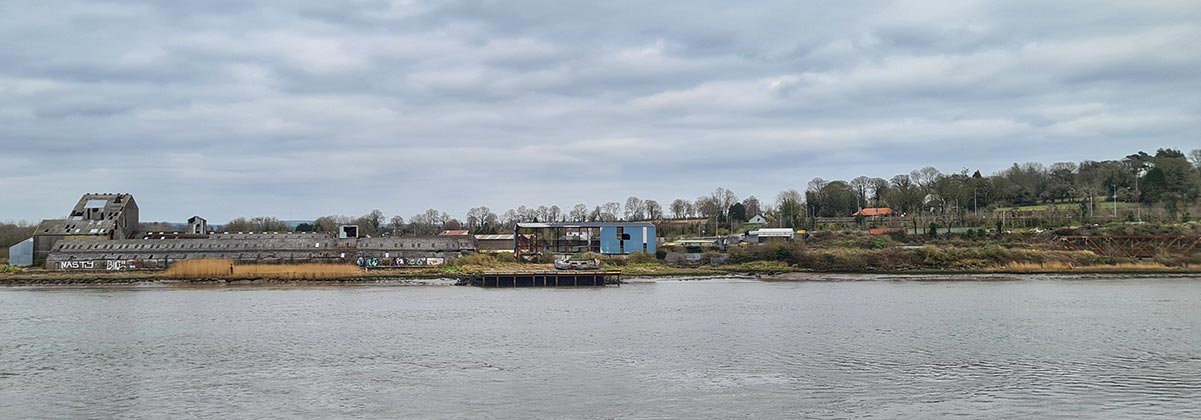
With a length of 367 metres (1,205 ft), the Old Red Iron Bridge was once the longest bridge in Waterford and one of the longest bridges in Ireland. It was surpassed in length by the Barrow Bridge which is on the same railway line, also built by William Arroll & Co. and is practically identical. The longest bridge in Waterford is now the nearby River Suir Bridge on the N25 Waterford Bypass which is 465 metres (1,526 ft). This bridge is known as the New Bridge by locals.
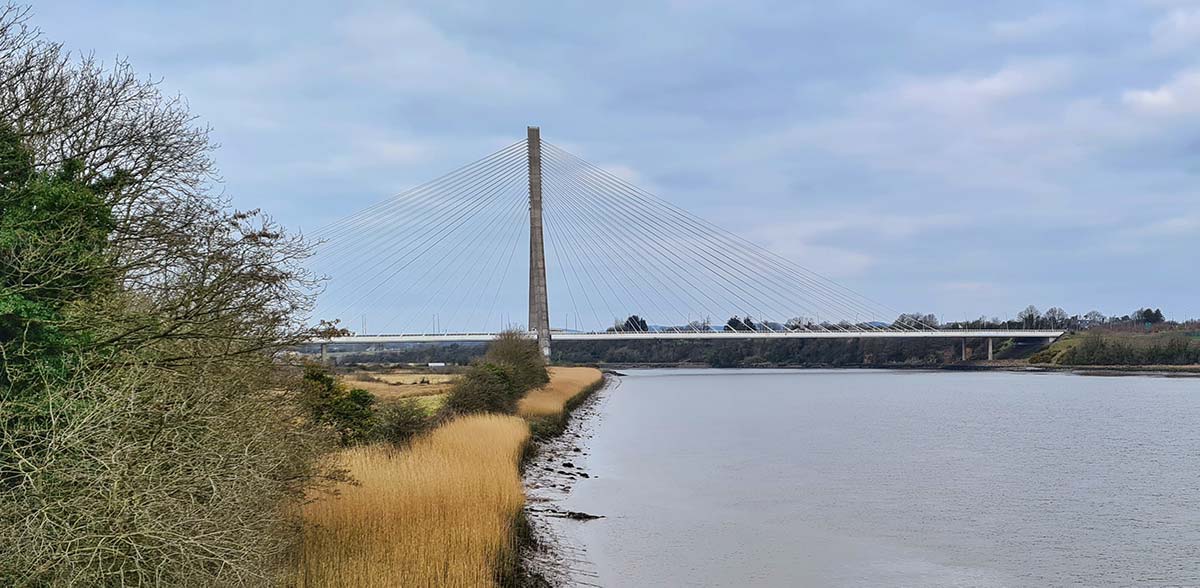
Originally, the railway route between the cities of Waterford and Cork was operated by two separate companies. The Great Southern and Western Railway (GS&WR) built a branch from Mallow on its Dublin to Cork main line to Fermoy and later on to Lismore. The Waterford, Dungarvan and Lismore Railway (WD&LR) built the route between Waterford and Lismore and the line was completed in 1878. GS&WR took over the entire route in 1898 and immediately began planning to connect it to Limerick to Rosslare railway line it currently had under construction.
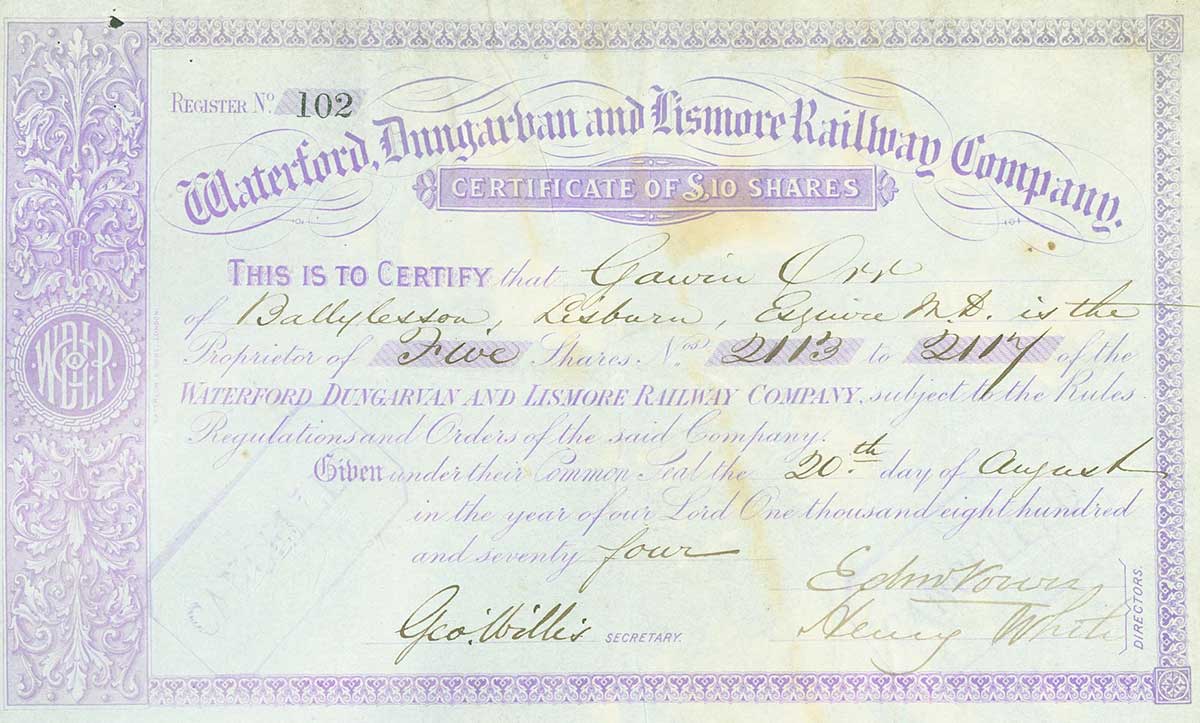
The Old Red Iron Bridge was built as part of this project, taking the railway line across the Suir to the north bank of the river and onwards to Rosslare. The new line opened in 1906. It created a continuous line from the transatlantic port of Cobh to the busiest Irish Sea port at Rosslare, from there across to Fishguard in Wales by ferry and onwards to London by train. The line was served by passenger trains, which offered convenient and comfortable transportation, as well as by goods trains, which carried a variety of goods and commodities, including livestock, timber and coal.
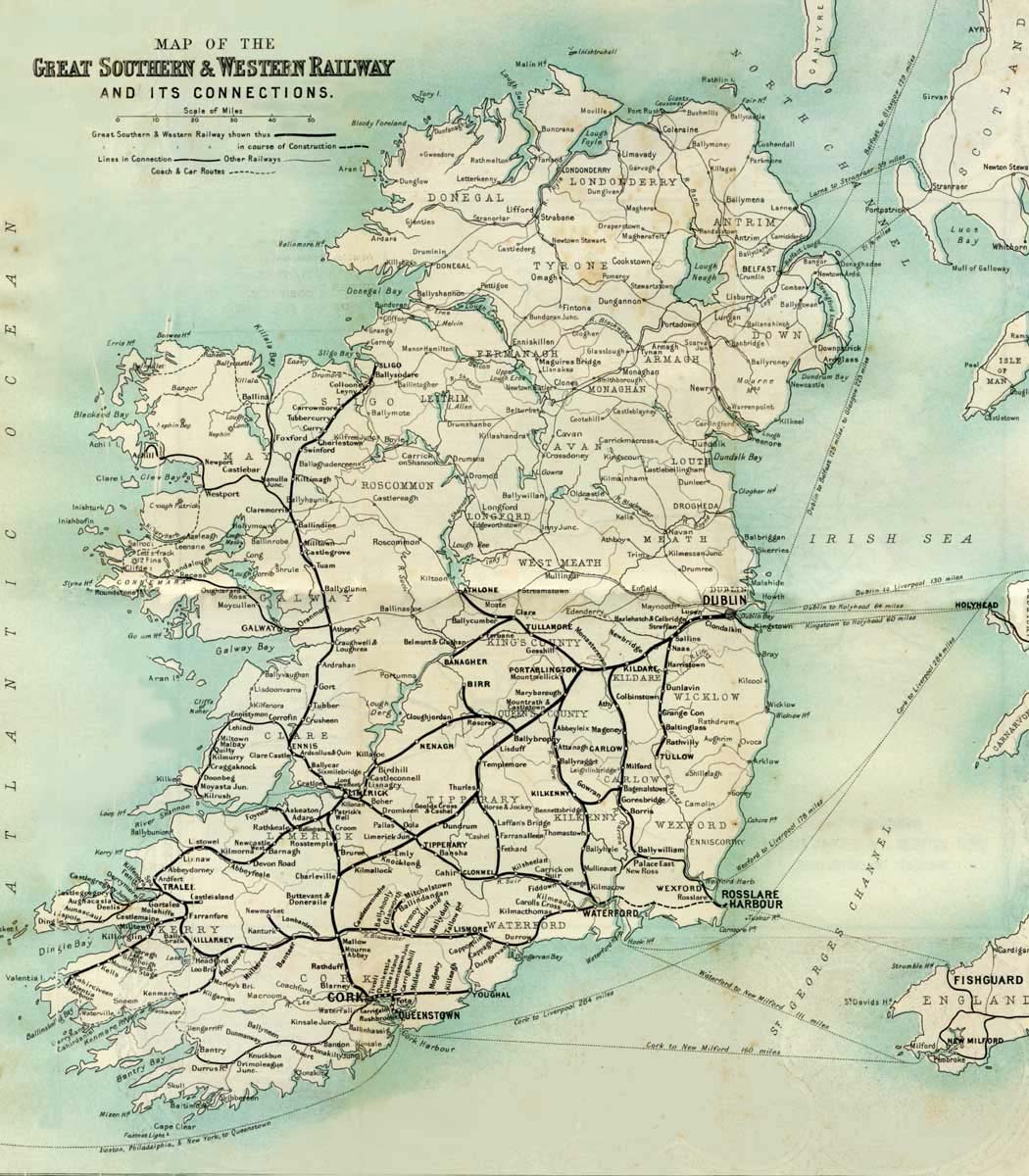
The railway line was important as the fastest mail route from the United Kingdom to the United States. The port of Cobh was one of the busiest ports in the world and was a key hub for transatlantic passenger and cargo traffic between Europe and North America. Known as Queenstown in the late 19th and early 20th centuries, Cobh was the departure point for millions of Irish people emigrating to the United States and Canada. It was also a major port of call for transatlantic liners, such as the RMS Titanic, which made its final call at the port before sinking in the North Atlantic.
In addition to its role as a transatlantic port, Cobh was also a major naval base for the British Royal Navy, with several ships being stationed at the port throughout its history. During World War I, Cobh was a key naval base for the British navy, and was involved in many important naval operations during the conflicts. The Cobh to London route was vitally important during the war. The prison and fortress at Spike Island was a notable feature of the port during this period.

The railway line continued to operate until 1967 but was closed for economic reasons. Mail had long since been delivered more effectively by air. The seaplane base at Foynes opened in 1935 under an agreement between the governments of the US, Britain, Canada and the Irish Free State, being the most westerly port in Ireland. A land airport was built in the nearby town of Shannon and on 24 October 1945, the first scheduled transatlantic commercial flight using a land plane, an American Overseas Airlines DC-4, Flagship New England, stopped at the airport on the New York City–Gander–Shannon–London route.
After it declined as a mail route, most patronage was for Cork on the boat train. It was possible to re-route between Waterford and Mallow via Limerick Junction, a route that was of greater mileage but which only resulted in a maximum 10 minute increase in journey time. Thus, the original Mallow to Waterford railway line was closed in 1967.
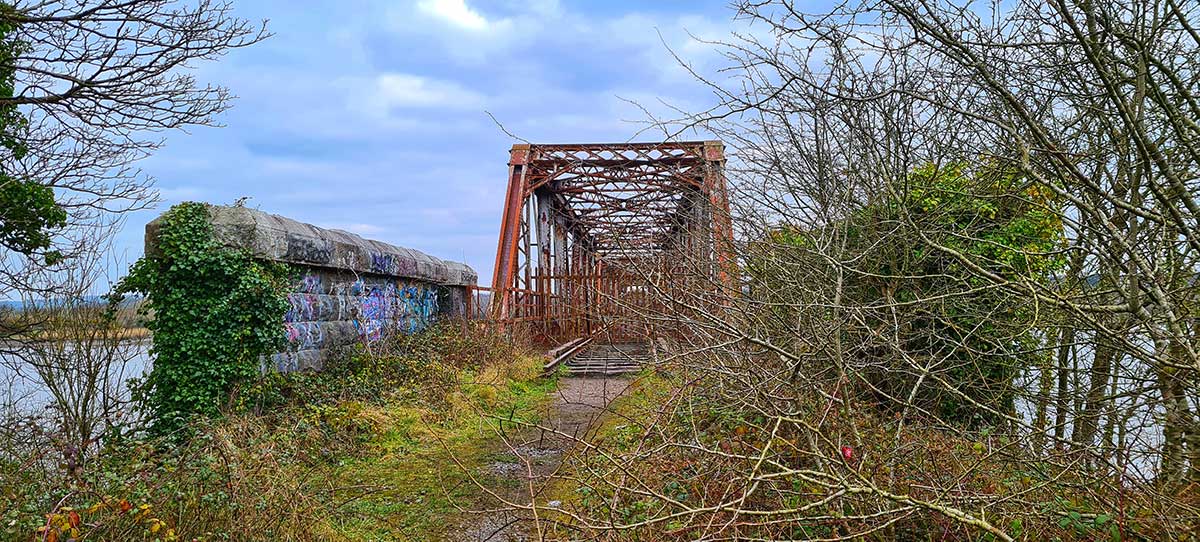
The line was dismantled between Mallow and Dungarvan but the Dungarvan to Waterford section was reopened in 1970 to service a mineral processing plant. Dolomite Limestone was brought from Bennettsbridge in County Kilkenny to Ballinacourty in Dungarvan by train and a spur was built on the original line to the factory. Waterford Stanley also used the Old Red Iron Bridge to receive and distribute goods until 1974. In 1982, the mineral factory in Dungarvan closed and CIE, the national company which now owned and operated the Irish rail network, continued to maintain it until 1987 when it was closed permanently.
The Old Red Iron Bridge continued in use up until 1995 when the central section and the track was removed to allow easier access of boats further up the river. This piece of track is located further downstream on lands owned by CIE. The bridge itself has had railings erected on both sides to prevent access.
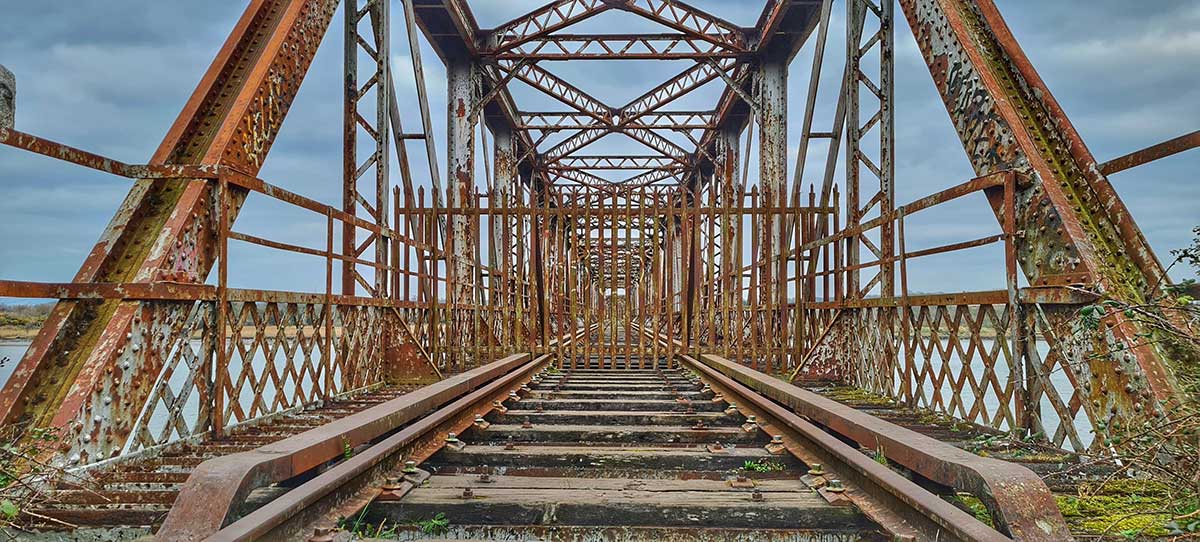
Part of the route south of the River Suir has been maintained as a tourist attraction by Waterford & Suir Valley Railway. The route between Waterford and Dungarvan was transformed into the Waterford Greenway, a cycle track which is part of the larger EuroVelo1 route. Over 300,000 people use the Greenway every year and it is currently being extended to New Ross and Tramore. Part of the route will connect through the revitalised North Quays in Waterford City.
There has been debate about the future of the Old Red Iron Bridge. Some have suggested using it to link to the greenway network, linking from the Waterford Greenway to a new South Kilkenny Greenway. For now however, it remains rusting and abandoned.

